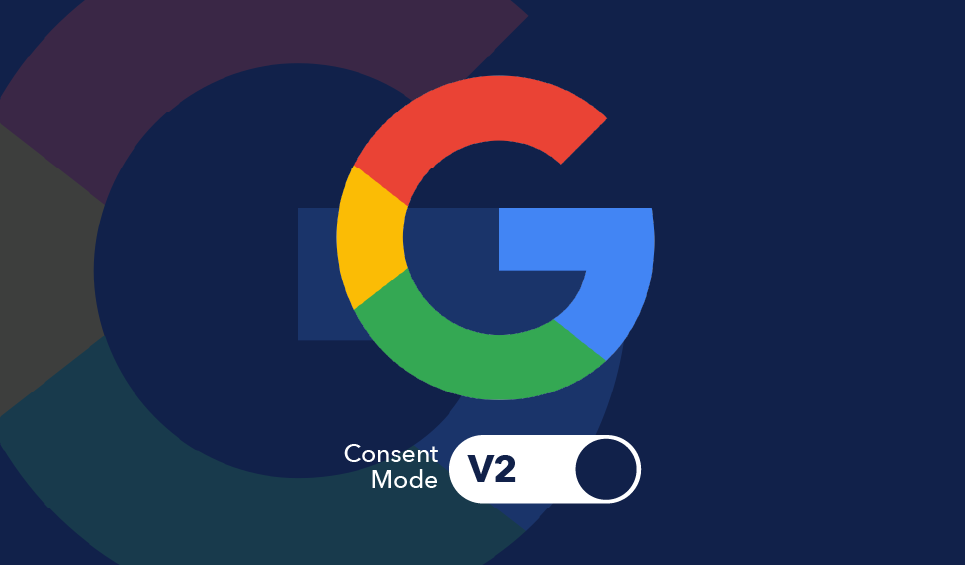Navigating Compliance with Google Consent Mode Version 2
Date published: 25 March 2024 Updated: 10 October 2024
A crucial update regarding Google’s Consent Mode, came into force in March 2024. If you aren’t already aware, Google Consent Mode is the way to ensure your website’s use of cookies and visitor data is compliant with GDPR and other data privacy regulations. The implementation of Google’s new Consent Mode Version 2 is mandatory for all website owners operating in the UK and Europe to maintain consistent data collection in Google Analytics and to ensure the effectiveness of Google Ad campaigns.
Here’s what you need to know:
Staying compliant with website data regulations and respecting user privacy are paramount concerns for businesses operating digital advertising. The Digital Markets Act (DMA) sets clear rules for identifying what it calls “gatekeepers.” These big digital platforms offer essential services like online search engines, app stores, and messaging services. The DMA mandates “gatekeepers” like Google to obtain explicit consent for collecting and using European citizens’ personal data.
In November 2023, Google launched Consent Mode V2 (CMv2), a tool aimed at helping businesses adhere to data privacy regulations while running successful digital advertising campaigns. CMv2 seeks to help businesses comply with privacy regulations like GDPR by providing more control over how data is collected and used for advertising and analytics purposes. This guide aims to provide a detailed overview of CMv2, its significance in light of the Digital Markets Act (DMA) and other privacy regulations, and practical steps for implementation.
Google now requires the implementation of Consent Mode Version 2 for advertisers using Google Ads for remarketing and auto-bidding, with the deadline being 6 March 2024.
Ensuring compliance with these regulations is essential for advertisers and publishers, particularly those operating within the European Economic Area (EEA). Failure to implement Consent Mode V2 will result in the inability to use advertising platforms like Google Ads and GA4 to capture user data within the EEA post-March 2024, which will significantly impact advertising strategies and effectiveness, potentially compromising the quality of audience and measurement data within Google Ads.

Understanding Consent Mode Version 2
CMv2 is an updated version of the original Consent Mode. It facilitates the seamless communication of users’ cookie consent choices to Google tags, thereby ensuring enhanced data integrity and compliance with the Digital Markets Act (DMA) and other privacy regulations.
CMv2 represents an enhanced version of the original Consent Mode, offering improved capabilities for seamless communication of users’ cookie consent choices to Google tags. By ensuring enhanced data integrity and alignment with privacy regulations like the DMA, CMv2 enables advertisers and business owners to confidently navigate the ever-evolving digital landscape.
The Impact of DMA and Privacy Regulations
In response to this framework and other privacy regulations, Google has made it compulsory for advertisers to adopt CMv2. Failure to comply with these regulations may result in limitations on advertising platforms like Google Ads and GA4, significantly impacting advertising strategies and data quality within Google Ads.
Ensuring Compliance and Data Integrity
For advertisers and publishers operating within the European Economic Area (EEA), compliance with CMv2 is essential. Implementing CMv2 involves obtaining explicit consent from users, effectively implementing consent management tools, and regularly reviewing and updating consent preferences. Adherence to Google’s guidelines and best practices is paramount to ensure seamless integration and safeguard user privacy.
Preparing for the Transition
As the deadline for adopting CMv2 has passed, businesses must take proactive steps to implement the necessary changes on their websites. This may involve collaborating with experienced professionals to ensure a smooth transition and minimise disruption to advertising operations.
CMv2 key features
CMv2 predominantly introduces two new parameters on top of the previous analytics_storage and ad_storage for marketing analytics:
- Ad_user_data – informs Google if user data can be stored for advertising purposes
- Ad_personalization – informs Google if remarketing can be enabled for personalised advertising purposes
By setting these parameters within your tracking, you are essentially ensuring that the website user’s data is secure and protected under privacy compliance.
You should approach the person responsible for your search advertising to get this implemented. However, if you’d like to discuss your options with us, please contact us.
In conclusion, adopting Consent Mode Version 2 is a crucial step for advertisers and business owners seeking to maintain compliance with data privacy regulations and uphold the integrity of their data in Google Ads. By understanding the significance of CMv2 in the context of the DMA and other privacy regulations, businesses can confidently navigate the transition and continue to leverage digital advertising effectively in the evolving regulatory landscape.

